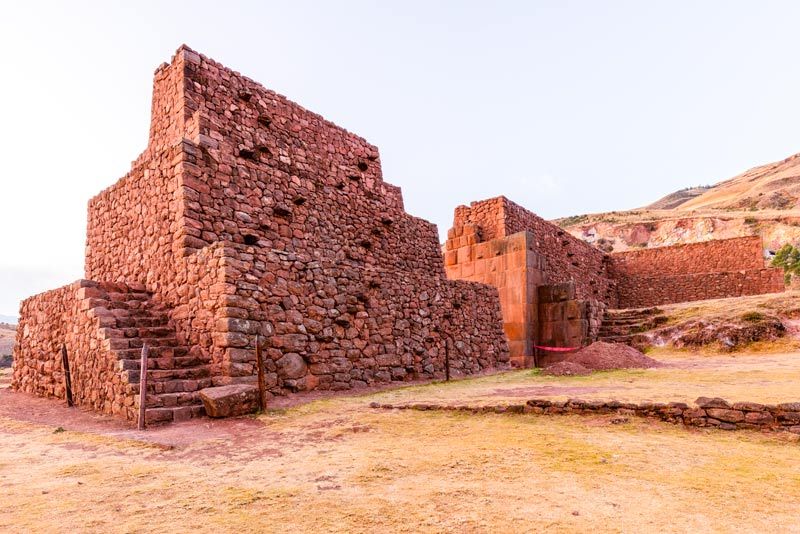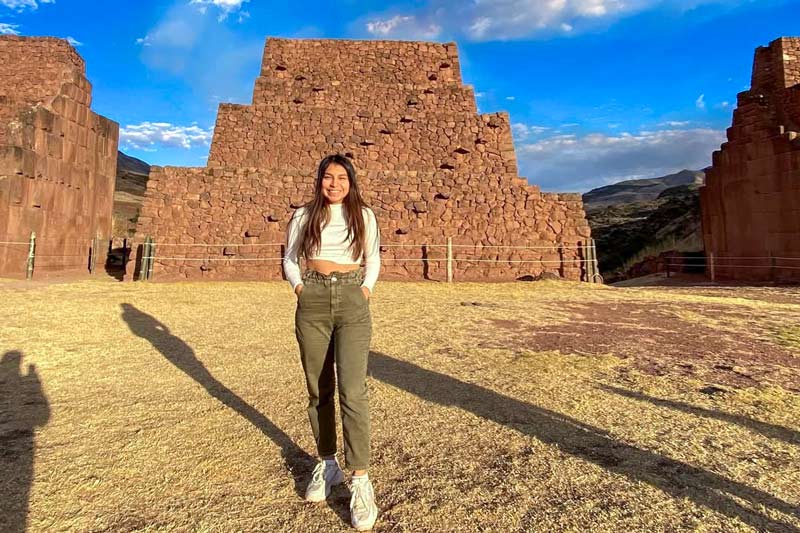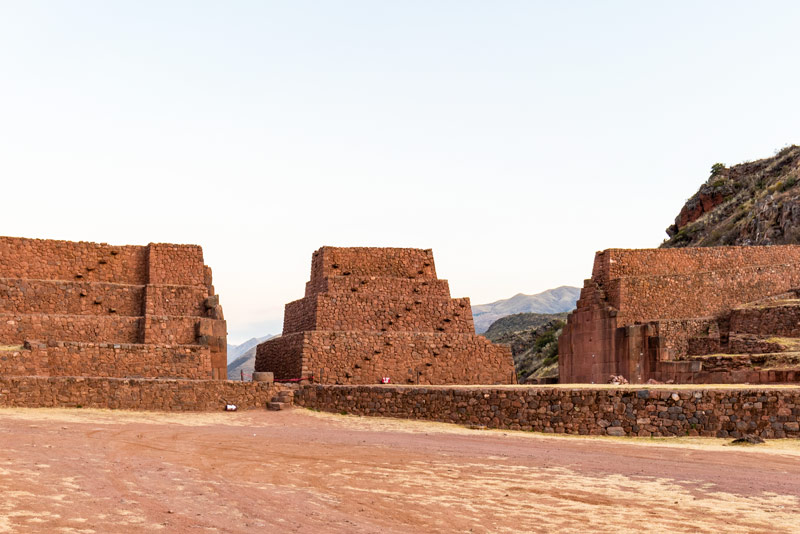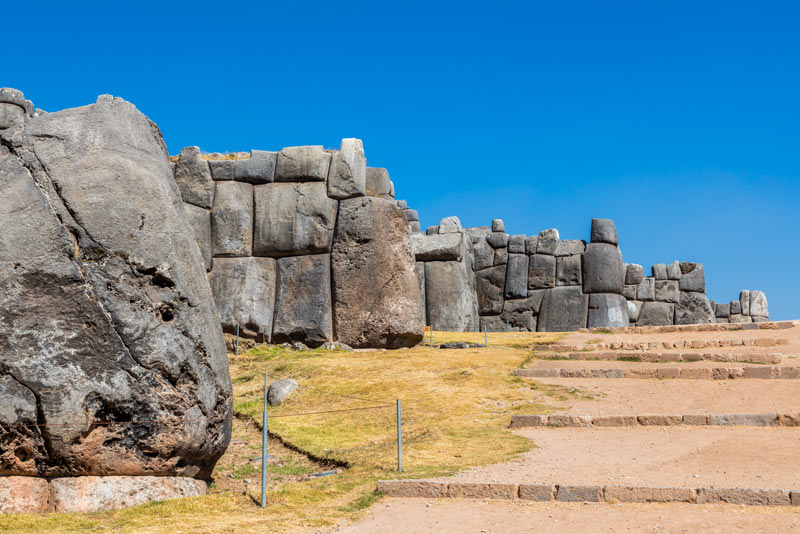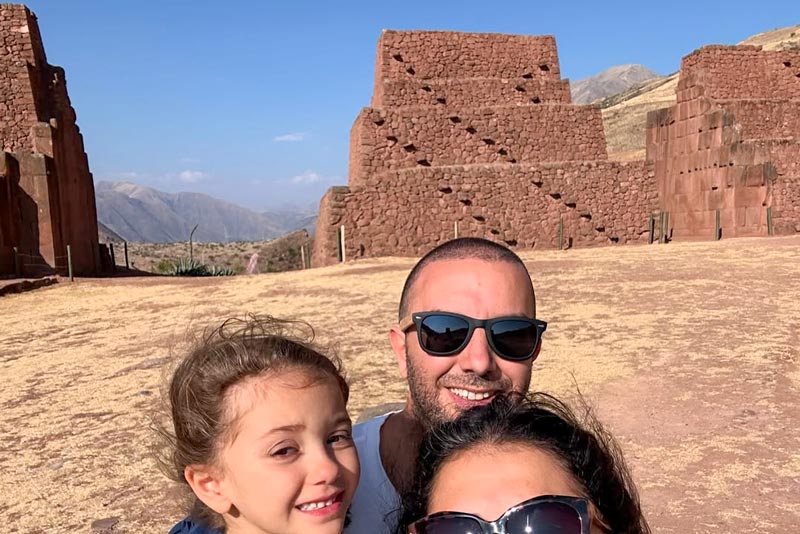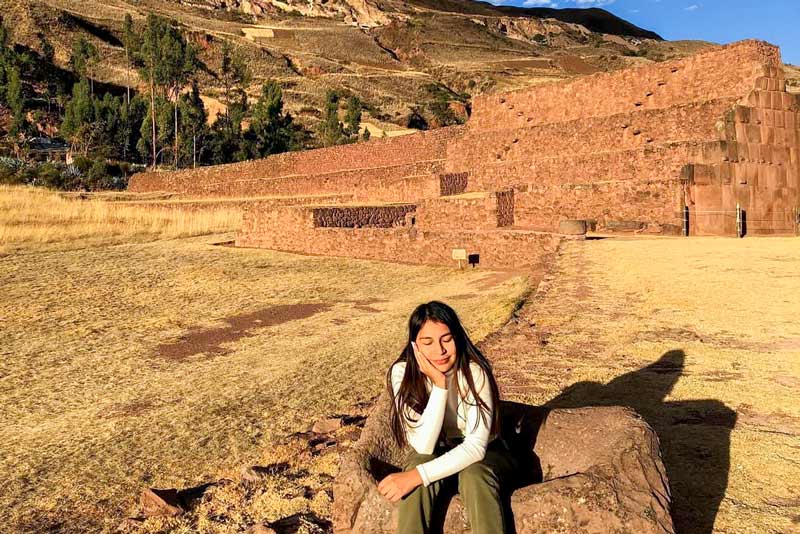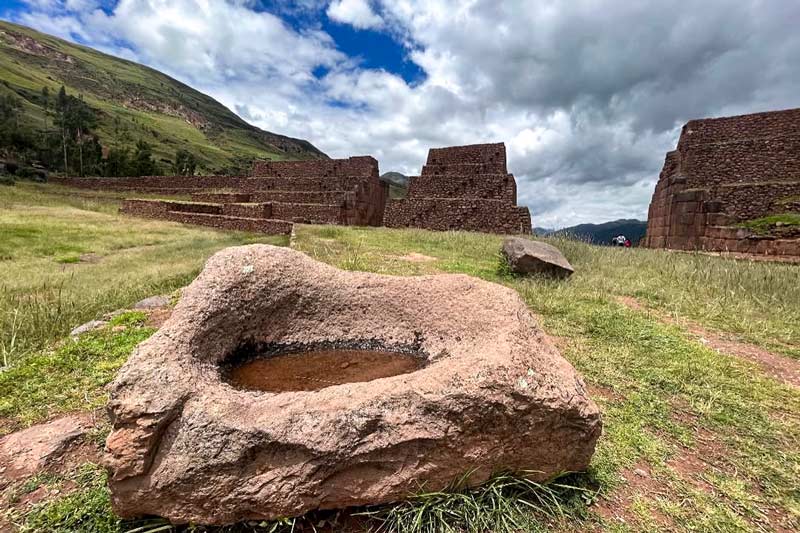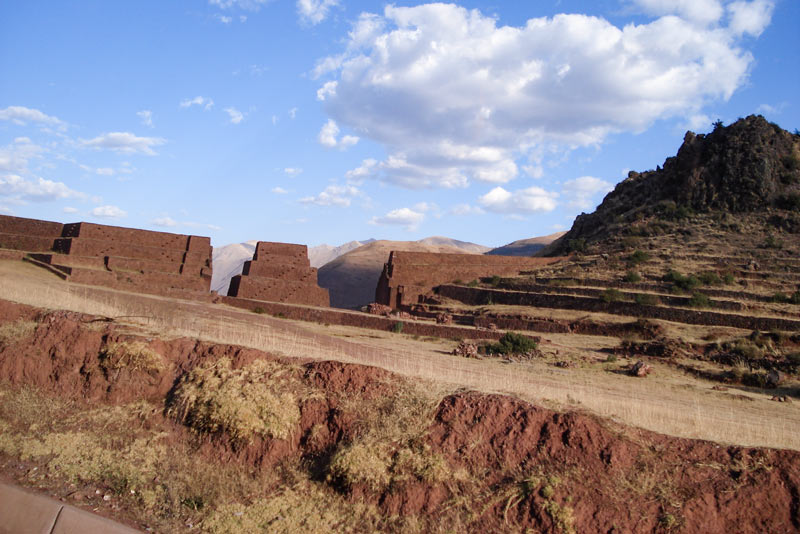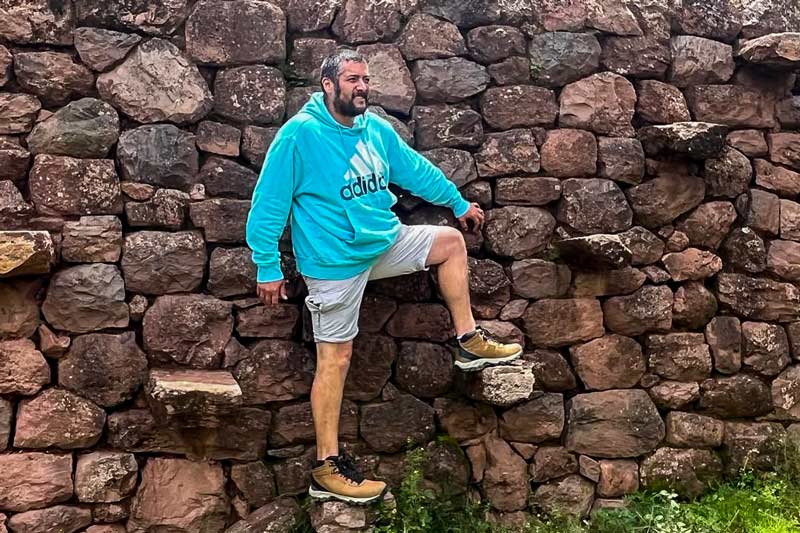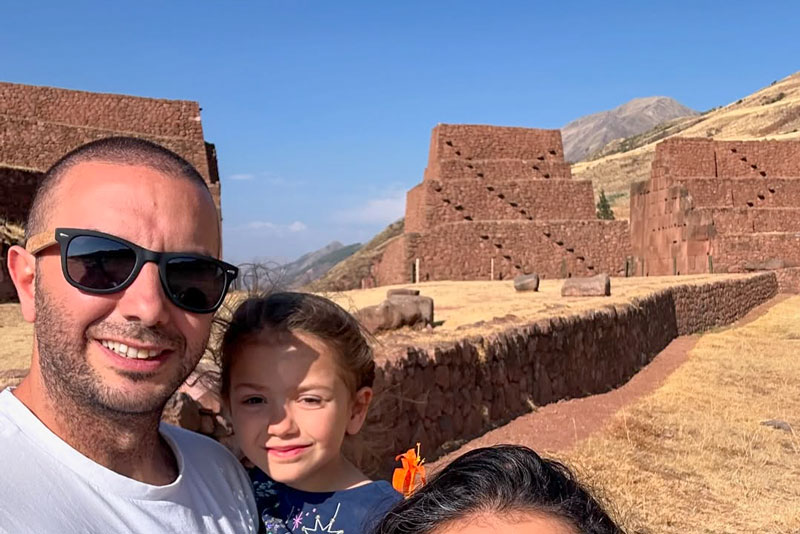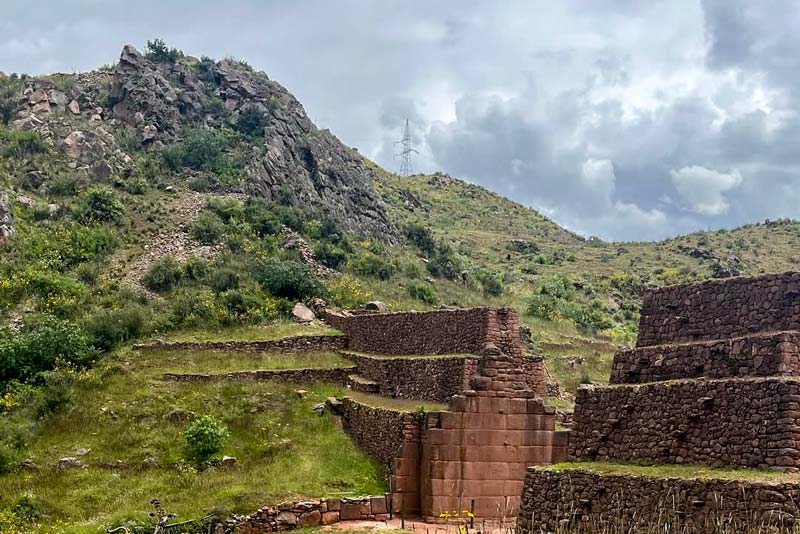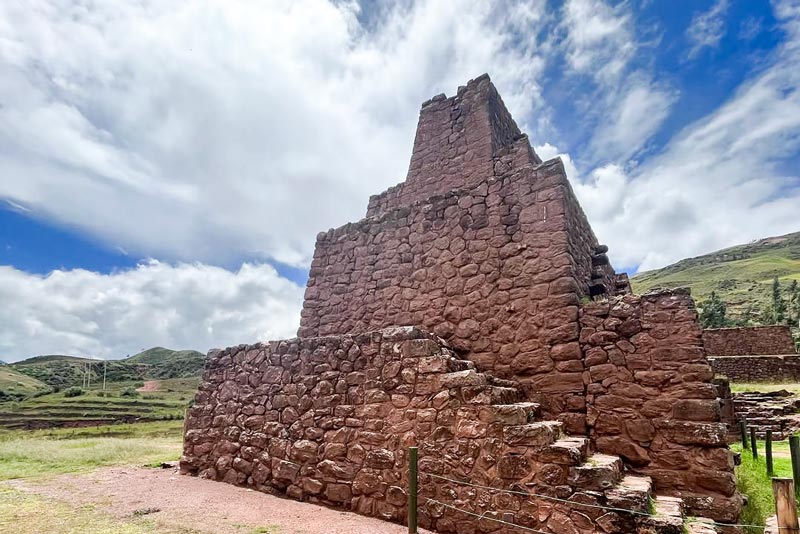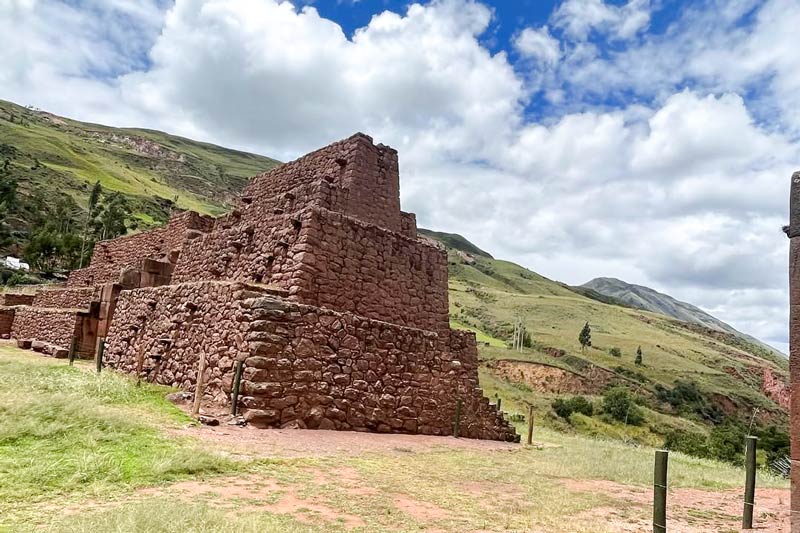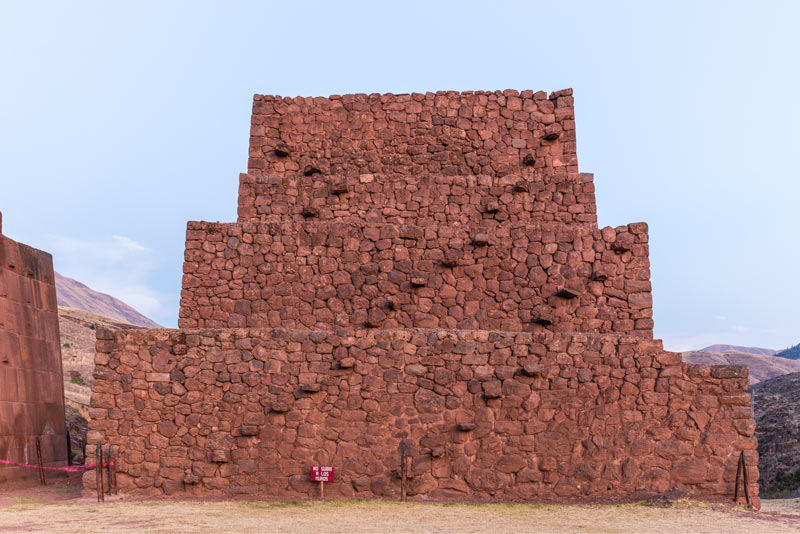Rumicolca: The Control Gate of Tahuantinsuyo
Rumicolca is an imposing archaeological monument located in the district of Lucre, in the South Valley of Cusco. Initially built by the Wari culture and perfected by the Incas, this site stands out for its monumental stone arch, which functioned as an important checkpoint on the royal road to Collasuyo, one of the regions of Tahuantinsuyo. Today, Rumicolca is a testimony to the strategic and cultural importance that this pass had in Andean history.
- What will I find in Rumicolca?
- Where is Rumicolca?
- How to get to Rumicolca?
- What does Rumicolca mean?
- Characteristics of Rumicolca
- Key elements to define Rumicolca
- Places similar to Rumicolca
- What other places should I visit during my visit to Rumicolca?
- Image gallery: Rumicolca
- Recommendations
- Frequently Asked Questions
What will I find in Rumicolca?
At Rumicolca you will find an imposing archaeological structure that combines the characteristics of the Wari and Inca cultures, reflecting the architectural continuity and evolution in the Andes. Its most notable element is the large stone arch, built with perfectly carved and fitted blocks, a hallmark of Inca engineering.At Rumicolca you will find an imposing archaeological structure that combines the characteristics of the Wari and Inca cultures, reflecting the architectural continuity and evolution in the Andes. Its most notable element is the large stone arch, built with perfectly carved and fitted blocks, a hallmark of Inca engineering.
In addition, you will be able to observe the pre-Incan base made of smaller stones, a vestige of the Wari culture, which highlights how the Incas reused and adapted previous structures for their own purposes. The place is surrounded by a mountainous landscape that frames the large construction, offering panoramic views of the South Valley along with a peaceful atmosphere, ideal for reflecting on the history of these civilizations.In addition, you will be able to observe the pre-Incan base made of smaller stones, a vestige of the Wari culture, which highlights how the Incas reused and adapted previous structures for their own purposes. The place is surrounded by a mountainous landscape that frames the large construction, offering panoramic views of the South Valley along with a peaceful atmosphere, ideal for reflecting on the history of these civilizations.
Rumicolca also holds secrets about its strategic use, as it served as a checkpoint on the road that connected Cusco with other regions of the Tahuantinsuyu. This place offers a unique experience for visitors interested in archaeology, history and ancestral architecture. Rumicolca also holds secrets about its strategic use, as it served as a checkpoint on the road that connected Cusco with other regions of the Tahuantinsuyu. This place offers a unique experience for visitors interested in archaeology, history and ancestral architecture.
If you have time, combine your visit to Rumicolca with other nearby sites, such as Piquillacta or Huacarpay Lagoon. This route will allow you to get a more complete view of the Southern Valley of Cusco and its cultural wealth. Being so close, you can optimize your day and enjoy a more varied experience that mixes archaeology, landscapes and biodiversity.
Where is Rumicolca?
Rumicolca is located in the district of Lucre, province of Quispicanchi, in the South Valley of Cusco, approximately 30 kilometers from the city. This archaeological site is located next to the road that connects Cusco with Urcos, making it an easily accessible point for visitors traveling this route.
Its proximity to other tourist attractions, such as Piquillacta and the Huacarpay lagoon, makes it an interesting stop for those who wish to explore the historical and scenic wealth of the Valle Sur.
How to get to Rumicolca?
Getting to Rumicolca is easy thanks to its strategic location in the South Valley. From the city of Cusco, you can take the following options:
- Public transport: Head to Avenida de la Cultura, where you will find buses and colectivos heading to Urcos. Ask the driver to drop you off in Rumicolca, which is about 30 kilometers from the center of Cusco. The trip takes about 40 minutes.
- Taxi or private transport: This is a more convenient and direct option. You can hire a taxi or private transport service from Cusco, which will allow you to manage your time better and enjoy stops at other nearby attractions.
- Guided tour: Booking a tour of the South Valley includes Rumicolca as part of the itinerary, along with other archaeological sites. It is an ideal alternative if you want to learn more about the history of the place.
What does Rumicolca mean?
The name Rumicolca, derived from Quechua, where “rumi” means stone and “colca” translates as storehouse or deposit, could refer to its historical function as a stone quarry used in different periods. This is because the carved stones of its structure, both in its pre-Incan base and in its Incan extension, could have been extracted and reused in later constructions.
The term could also refer to the site as a place where stone material was stored and managed for construction purposes, given its strategic location near important Tahuantinsuyu routes. Thus, Rumicolca was not only a control and passage gate, but also a space with a relevant role in the use of natural resources essential for Inca buildings.
Characteristics of Rumicolca
| Aspect | Feature |
|---|---|
| Location | Lucre District, Quispicanchi province, in the South Valley of Cusco. |
| Altitude | Approximately 3,200 meters above sea level. |
| Access | Next to the Cusco-Urcos highway, 30 kilometers from the city. |
| Around | Surrounded by mountains and close to the Huacarpay lagoon and the Piquillacta archaeological complex. |
| History | Built by the Wari culture and adapted by the Incas as a control gate in the Tahuantinsuyu. |
| Materials | Base of small pre-Incan stones and large carved blocks. |
| Climate | Dry temperate climate, with sunny days and cool nights, characteristics of the South Valley. |
| Demography | It is located in a rural area inhabited by peasant communities. |
| Meaning | Its name in Quechua means “stone warehouse”, alluding to its construction and possible use as a quarry. |
Key elements to define Rumicolca
Rumicolca is a multifunctional archaeological monument that can be defined primarily as a control and passage structure, with pre-Inca roots and use as a quarry in later times.
Control gate
Its main structure consists of a large stone portal that served as a strategic control point to supervise the passage of people and goods along the Inca trail. In this sense, it resembles a customs post of the time.
Historical importance
Rumicolca has pre-Incan origins, as its base was built by the Wari culture. Later, the Incas adapted and expanded the structure, giving it its final form and using it as part of their road network.
Later use as a quarry
In colonial periods or even before, some of its stones were reused for other constructions.
Places similar to Rumicolca
If we compare Rumicolca with other tourist attractions in Cusco, we can highlight several sites that share similarities in terms of their historical importance, their function within the Inca system or their cultural value.
Qenqo
Like Rumicolca, the archaeological site of Qenqo was an important site for the Incas, known for its ceremonial and religious use. Although this one has more notoriety, both places were used for strategic purposes and as control centers. Qenqo, with its stone altar and structure, shares that mystical atmosphere that visitors can also find in Rumicolca.
Piquillacta
Piquillacta, a pre-Inca city in the southern Cusco Valley, is an archaeological complex of the Wari culture, located near Rumicolca. Although this complex is larger and better known, both share the fact that they are sites that show the organization and strategies of ancient civilizations. The difference is that Piquillacta has a larger and more complex structure, while Rumicolca focuses on its access control function.
Sacsayhuaman
The Sacsayhuamán fortress is one of the most impressive monuments in Cusco and, like Rumicolca, had a strategic function to control access to the city. Although Sacsayhuamán is much larger and better known, both sites have in common their monumental architectural approach and their value as control and defense points in the Inca empire.
Ollantaytambo
Ollantaytambo, while larger and more popular, also has similarities to Rumicolca in terms of its function as a military and religious center. Both sites were part of the Inca Empire’s defensive and administrative system, and while Ollantaytambo has a more diverse set of ruins, both offer an in-depth look at Inca architecture and engineering.
Tambomachay
Unlike Rumicolca, Tambomachay (Tambomachay: Interesting Facts) was intended for ceremonial purposes, specifically related to the cult of water. This complex shows how the Incas channeled water, using perfectly constructed stone fountains and channels. Both places, although with different functions, highlight the importance that the Incas gave to nature and architectural elements in their worldview.
Visiting Rumicolca is an enriching experience that is accessible to everyone, as its entrance is completely free. This makes it an excellent option for those who wish to explore Inca history and architecture without worrying about additional costs. Being an easily accessible site with no entry restrictions, you can enjoy its impressive construction and natural surroundings without rushing, ensuring a peaceful and economical visit.
What other places should I visit during my visit to Rumicolca?
During your visit to Rumicolca, you can take the opportunity to explore other nearby places in the Southern Valley of Cusco, which also have significant historical and cultural value.
Located approximately 3 kilometers from Rumicolca, Piquillacta is an extensive archaeological complex of the Wari culture. This site is notable for its adobe and stone constructions, including dwellings, plazas and roads, reflecting the advanced urban planning of the Wari. The city was surrounded by a defensive wall and had an efficient drainage system. Piquillacta offers a unique insight into pre-Incan life in the region.
Huacarpay Lagoon
Located about 5 kilometers from Rumicolca, Huacarpay Lagoon is a wetland ecosystem that is home to a great diversity of flora and fauna. It is especially known for being a habitat for migratory birds, including flamingos and ducks. The natural environment is ideal for activities such as bird watching, hiking, and boating. In addition, the lagoon offers panoramic views of the Andes and is a perfect place to enjoy the tranquility and beauty of the Andean landscape.
Tipón
About 20 kilometers from Rumicolca, the Tipón archaeological park stands out for its agricultural terraces and irrigation canals. This complex showcases the advanced hydraulic engineering of the Incas, with water distribution systems that still function. Tipón also includes ceremonial and residential structures, offering a comprehensive view of Inca life in the region.
Andahuaylillas
Located approximately 10 kilometers from Rumicolca, Andahuaylillas is known for its colonial church, the Iglesia de San Pedro Apóstol, which houses an impressive collection of religious art and murals from the Cusco school. The church is a prominent example of Andean Baroque architecture and is known as the “Sistine Chapel of America.” In addition, the town offers an authentic cultural experience.
Recommendations
- Bring water and sun protection: The weather in the area is generally sunny, so it is important to bring water to stay hydrated. Also, don’t forget sunscreen, sunglasses and a hat or cap, especially if you plan to spend time outdoors.
- Dress comfortably: Due to the altitude (approximately 3,200 meters above sea level), temperatures can vary, so it is advisable to dress in layers. Wear comfortable walking clothes and appropriate shoes, as the terrain can be uneven.
- Get your camera ready: Rumicolca is an archaeological site surrounded by a beautiful Andean landscape. Don’t forget your camera to capture the stunning views and stone structures that characterize the place.
- Explore the surroundings: Take advantage of Rumicolca’s proximity to other places of interest, such as Piquillacta and Huacarpay Lagoon. Plan an itinerary that allows you to visit these places as well, since together they will offer you a complete view of the region.
- Arrive early: To avoid the crowds and enjoy a more peaceful experience, we suggest arriving early in the morning. Plus, the weather is cooler and more pleasant during the early hours of the day.
- Respect the environment: As with any archaeological site, it is important to be respectful of the place. Do not touch the stones or structures and do not leave any rubbish behind. You will help preserve this heritage for future generations.
- Check the weather before you go: Although the weather in the South Valley is generally warm and dry, conditions can change, especially during the rainy season. Check the weather forecast before you visit to be prepared.
Frequently Asked Questions
1) What is Rumicolca?
Rumicolca is an ancient archaeological complex located in the Southern Valley of Cusco, known for its impressive stone construction. It is believed to have served as a control and surveillance center on the road network of the Inca Empire.
2) Where is Rumicolca located?
Rumicolca is located about 30 kilometers southeast of the city of Cusco, in the district of Lucre, within the province of Quispicanchi, near the Cusco-Urcos highway.
3) How can I get to Rumicolca?
To get to Rumicolca, you can take public or private transport from Cusco to Urcos. From there, there are rural roads that will take you directly to the archaeological site. Access is easy and well signposted.
4) What is the main function of Rumicolca?
It is believed that Rumicolca fulfilled control functions in the Tahuantinsuyu road network. It was strategically located on an important route, allowing the regulation of the passage of people and goods through the empire.
5) Is a guide necessary to visit Rumicolca?
Although not strictly necessary, it is recommended to hire a guide to provide you with detailed information about the history, structures and cultural context of Rumicolca. A guide can make your experience much more enriching.
6) What other places can I visit near Rumicolca?
Near Rumicolca, you can visit the archaeological complex of Piquillacta, the Huacarpay Lagoon and Tipón, all located in the South Valley of Cusco and offering a great travel route along with beautiful landscapes.
7) How long is recommended to visit Rumicolca?
A visit to Rumicolca usually lasts between 30 minutes and 1 hour, depending on your interest in exploring the site and learning about the historical details. If you are visiting other nearby places, such as Piquillacta, you can dedicate a full day to the area.
8) Is it possible to do activities in Rumicolca?
In addition to the archaeological visit, in the surroundings of Rumicolca you can enjoy walks through the Andean landscape and witness bird watching, especially if you visit the Huacarpay Lagoon on your travel route.
9) When is the best time to visit Rumicolca?
The best time to visit Rumicolca is during the dry season, from April to October, when rainfall is minimal and weather conditions are more pleasant for walking and exploring.
Advice from people who have been there
 By: Martin O.
By: Martin O.“Impressive architecture“
“My visit to Huacarpay lagoon was wonderful. I was lucky enough to see many birds, but I still have a hard time counting how many there were. Everything around was great. My family and I enjoyed a lovely day in the countryside surrounded by beautiful scenery.“
By Ticket Machu Picchu – Last updated, January 28, 2025
